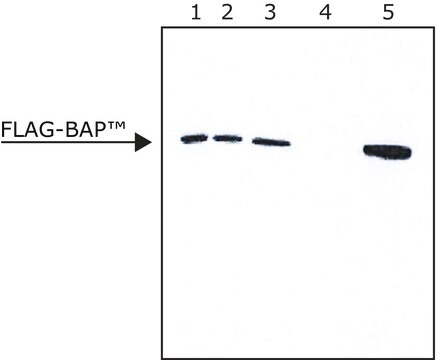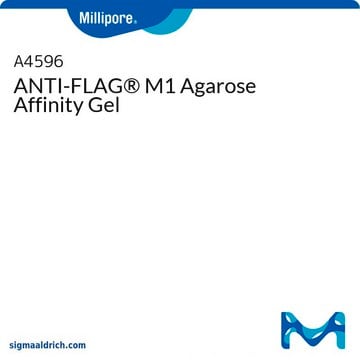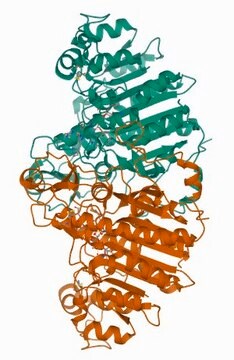Kluczowe dokumenty
CELLMM2
FLAG® M Purification Kit
For Mammalian expression systems.
Synonim(y):
Anti-ddddk, Anti-dykddddk
About This Item
Polecane produkty
Poziom jakości
metody
protein extraction: suitable
Warunki transportu
wet ice
temp. przechowywania
−20°C
Zastosowanie
Learn more product details in our FLAG® application portal.
Cechy i korzyści
- Includes ready to use reagents, columns, and a detailed protocol for affinity purification of FLAG fusion proteins.
- ANTI-FLAG M2 Affinity Gel allows efficient binding of FLAG fusion proteins without the need for preliminary steps and calibrations.
- Two alternatives for efficient elution conditions (by acidic conditions or by competition with FLAG peptide).
Opakowanie
Inne uwagi
Informacje prawne
Elementy zestawu są też dostępne oddzielnie
- C2978CelLytic™ M, Cell Lysis Reagent, Suitable for Mammalian cell lysis and protein solubilization.Karta charakterystyki
- SAE0194Purified 3xFLAG® peptide, ≥95% (HPLC), lyophilized powderKarta charakterystyki
- A2220ANTI-FLAG® M2 Affinity Gel, purified immunoglobulin, buffered aqueous glycerol solutionKarta charakterystyki
- C2103Chromatography columns, general-purpose, volume 10 mL, Overall H 5 in.Karta charakterystyki
Kod klasy składowania
10 - Combustible liquids
Wybierz jedną z najnowszych wersji:
Masz już ten produkt?
Dokumenty związane z niedawno zakupionymi produktami zostały zamieszczone w Bibliotece dokumentów.
Klienci oglądali również te produkty
Powiązane treści
Techniki oczyszczania białek, odczynniki i protokoły oczyszczania rekombinowanych białek przy użyciu metod obejmujących wymianę jonową, wykluczenie wielkości i chromatografię powinowactwa białek.
Protein purification techniques, reagents, and protocols for purifying recombinant proteins using methods including, ion-exchange, size-exclusion, and protein affinity chromatography.
Techniki oczyszczania białek, odczynniki i protokoły oczyszczania rekombinowanych białek przy użyciu metod obejmujących wymianę jonową, wykluczenie wielkości i chromatografię powinowactwa białek.
Protein expression technologies for expressing recombinant proteins in E. coli, insect, yeast, and mammalian expression systems for fundamental research and the support of therapeutics and vaccine production.
Nasz zespół naukowców ma doświadczenie we wszystkich obszarach badań, w tym w naukach przyrodniczych, materiałoznawstwie, syntezie chemicznej, chromatografii, analityce i wielu innych dziedzinach.
Skontaktuj się z zespołem ds. pomocy technicznej













